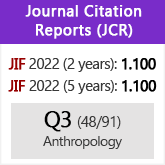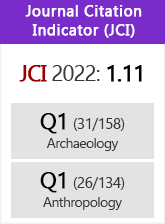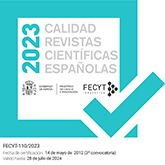Landscape changes and human activity in Monte Penide (Redondela, Pontevedra): a methodological approach
DOI:
https://doi.org/10.3989/tp.2000.v57.i1.268Keywords:
Palaeoenvironment, Soil science, Trace elements, Galician petro glyphs, Brome Age, Iberian PeninsulaAbstract
We have surveyed two areas with open air rock art in Monte Penide, finding in the process several artefact scatters near the petro glyphs of roughly the same age. Also, we have undertaken a soil analysis of a section already exposed in one of those places (Coto da Fenteira), looking for occurrences of enrichment in certain trace elements (Ti, Zr, Hg or Br) along the sequence. As a result of this studies in combination with 14C dating of charcoal and organic matter, we have been able to define two main erosive episodes, resulting from human activity: one in the first half of the third millennium BC and a second, less violent one, from the start of the second millennium BC. These episodes have to do mostly with the spread of a farming economy during the Chalcolithic and its consolidation along the Earlier Bronze Age, thus rejecting the notion of a socioeconomic crisis during the latter and showing, instead, a progressive interference with the environment by human groups up to the second Iron Age.
Downloads
Download data is not yet available.
Downloads
Published
2000-06-30
How to Cite
Martínez Cortizas, A., Fábregas Valcarce, R., & Franco Maside, S. (2000). Landscape changes and human activity in Monte Penide (Redondela, Pontevedra): a methodological approach. Trabajos De Prehistoria, 57(1), 173–184. https://doi.org/10.3989/tp.2000.v57.i1.268
Issue
Section
Reports
License
Copyright (c) 2000 Consejo Superior de Investigaciones Científicas (CSIC)

This work is licensed under a Creative Commons Attribution 4.0 International License.
© CSIC. Manuscripts published in both the printed and online versions of this Journal are the property of Consejo Superior de Investigaciones Científicas, and quoting this source is a requirement for any partial or full reproduction.All contents of this electronic edition, except where otherwise noted, are distributed under a “Creative Commons Attribution 4.0 International” (CC BY 4.0) License. You may read here the basic information and the legal text of the license. The indication of the CC BY 4.0 License must be expressly stated in this way when necessary.
Self-archiving in repositories, personal webpages or similar, of any version other than the published by the Editor, is not allowed.
















